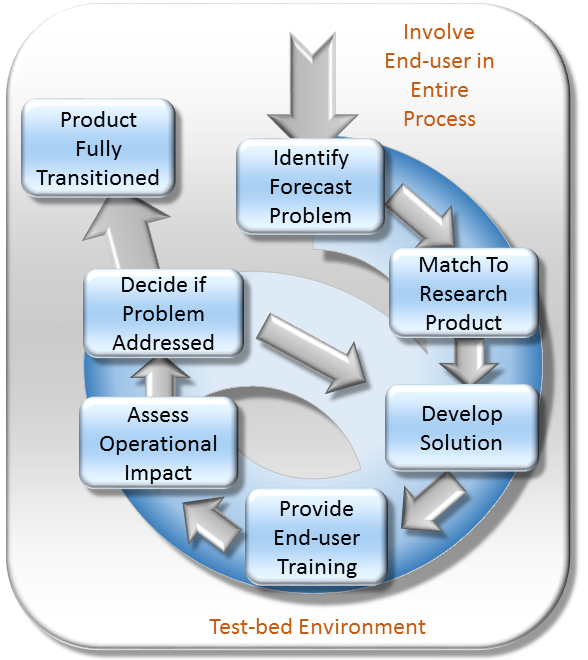NASA SPoRT DustTracker-AI product successfully tracks plumes of dust in the Plains, Upper Midwest
Large dust plumes wreaked havoc across the Plains and Upper Midwest on October 23-24, 2022. In the state of Kansas, visibility was reduced to less than a mile near Dodge City, causing hazardous driving conditions for several hours. In Minnesota, blowing dust mixed with rainfall turned into mud, sticking onto cars and windows of homes during the early morning hours of October 24th.
For operational weather forecasters, dust is very difficult to decipher on visible and infrared imagery. Sometimes dust particles are too thin in size to detect on satellite imagery or are difficult to distinguish from the land surface. In other instances, dust can hide under clouds or mix with wildfire smoke.
Other satellite products such as the Dust RGB (Red, Green, Blue) were developed by combining multiple imagery bands to make an image that enhances dust. The GOES-16 Advanced Baseline Imager (ABI) Dust RGB product shown in Figure 1 emphasizes dust in a pink color during daytime hours.
Figure 1. The GOES-16 ABI Dust RGB product showing the dust plumes from October 23-24, 2022 across the Plains and Upper Midwest represented by the pink color on the imagery.
Unfortunately, there are limitations when using the GOES-16 ABI Dust RGB product alone to showcase dust. At night, as land surface cools, dust and land can be similar temperatures making it difficult for the RGB product to differentiate dust from the surface. In addition, the colors on the RGB product are not distinguishable enough for people who have color vision deficiency.
These limitations inspired NASA SPoRT research scientists to develop the DustTracker-Artifical Intelligence (AI) product. Through machine learning (ML), the DustTracker-AI product can better detect, track, and further enhance dust to the human eye.
Figure 2. NASA SPoRT DustTracker-AI product greatly amplifies the pink color on the imagery, representing the plumes of dust that developed between October 23-24, 2022, over the Plains and Midwest.
As seen in Figure 2, the DustTracker-AI product amplified dust in each image using bright magenta colors. A robust training database and development of a random forest model has allowed the model to learn how to identify dust in GOES-16 ABI imagery and assign a probability (0-100%) that dust is present in each new image.
When the DustTracker-AI is overlaid with the GOES-16 ABI Dust RGB product shown in Figure 3 for the dust event that occurred between October 23-24, 2022, the DustTracker-AI allows operational forecasters to easily decipher the plumes of dust from land and other cloud formations.
Figure 3. Overlay of the GOES-16 ABI Dust RGB (Red, Green, Blue) product and NASA SPoRT DustTracker-AI product between 16 UTC October 23, 2022 to 07 UTC October 24, 2022.
The NASA SPoRT DustTracker-AI product is a value-added product which helps identify features in difficult imagery, can be used as a training and education tool to help users learn to interpret RGBs, and is an aid to increase users' confidence in using RGBs products.

Responsible Official: Dr. Andrew Molthan (andrew.molthan@nasa.gov)
Page Curator: SPoRT Support (msfc-dl-sport-support@mail.nasa.gov)
Support Disclaimer
